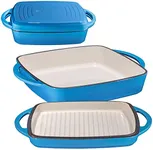Buying Guide for the Best Staub Dutch Ovens
When it comes to picking the right Staub Dutch oven, it's important to consider a few key specifications that will help you find the best fit for your cooking needs. Dutch ovens are versatile kitchen tools that can be used for a variety of cooking methods, including braising, baking, and simmering. Understanding the different features and how they align with your cooking habits will ensure you make a well-informed decision.SizeThe size of a Dutch oven is typically measured in quarts and determines how much food you can cook at once. This is important because it affects the quantity of food you can prepare and the types of dishes you can make. Sizes generally range from 2 quarts to 13 quarts. For individuals or small families, a 4-6 quart Dutch oven is usually sufficient. For larger families or those who like to cook in bulk, a 7-9 quart Dutch oven might be more appropriate. If you frequently entertain or cook large meals, consider a 10-13 quart option. Think about the typical portion sizes you cook and choose a size that will accommodate your needs without being too cumbersome to handle.
MaterialStaub Dutch ovens are made from cast iron, which is known for its excellent heat retention and even cooking. The interior is coated with a black matte enamel that is durable and resistant to chipping. This material is important because it ensures consistent cooking results and longevity of the product. When choosing a Dutch oven, consider the benefits of cast iron, such as its ability to maintain steady temperatures and its suitability for both stovetop and oven use. If you value durability and versatility in your cookware, a cast iron Dutch oven with enamel coating is a great choice.
ShapeDutch ovens come in different shapes, primarily round and oval. The shape can influence how the heat is distributed and the types of dishes you can prepare. Round Dutch ovens are generally more versatile and fit well on standard stovetops, making them ideal for soups, stews, and baking bread. Oval Dutch ovens, on the other hand, are better suited for roasting larger cuts of meat or poultry. Consider the types of dishes you cook most often and choose a shape that will best accommodate those recipes.
Lid DesignThe lid design of a Dutch oven is crucial for moisture retention and even cooking. Staub Dutch ovens feature a self-basting lid with small spikes on the underside that help to evenly distribute moisture back onto the food. This is important for achieving tender, flavorful results, especially in slow-cooked dishes. When selecting a Dutch oven, look for a lid that fits snugly and has a design that promotes moisture retention. If you frequently cook dishes that require long, slow cooking times, a self-basting lid can be particularly beneficial.
HandlesThe handles on a Dutch oven should be sturdy and easy to grip, as they will need to support the weight of the pot when it is full. This is important for safety and ease of use. Staub Dutch ovens typically have large, ergonomic handles that are easy to grasp, even with oven mitts. When choosing a Dutch oven, consider the size and design of the handles, especially if you have smaller hands or limited strength. Ensure that the handles are comfortable to hold and provide a secure grip.
ColorWhile the color of a Dutch oven does not affect its performance, it can be an important factor for aesthetic reasons. Staub Dutch ovens come in a variety of colors, allowing you to choose one that matches your kitchen decor or personal style. When selecting a color, consider how it will look in your kitchen and whether it will complement your other cookware. If you enjoy having visually appealing kitchen tools, choosing a color that you love can enhance your cooking experience.
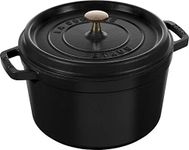



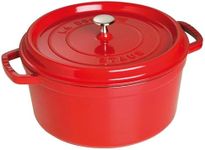
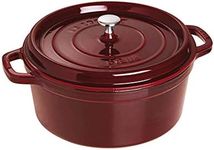
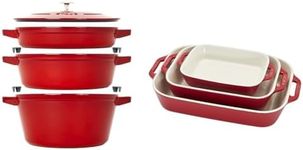

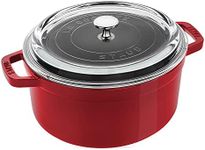



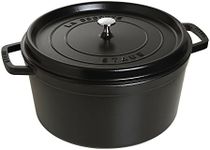

![LoafNest: The Original Breadbaking Dutch Oven. 2 Qt Covered Cast Iron East Sourdough Baker. Non-Toxic Oven-Safe to 500 F [Casserole only]](https://images-proxy.bestreviews.guide/p3IV27U4rJKTqxx-v7OF5H8tq58=/0x150/https://m.media-amazon.com/images/I/41NAV6kVd6L._AC_CX679_.jpg)

